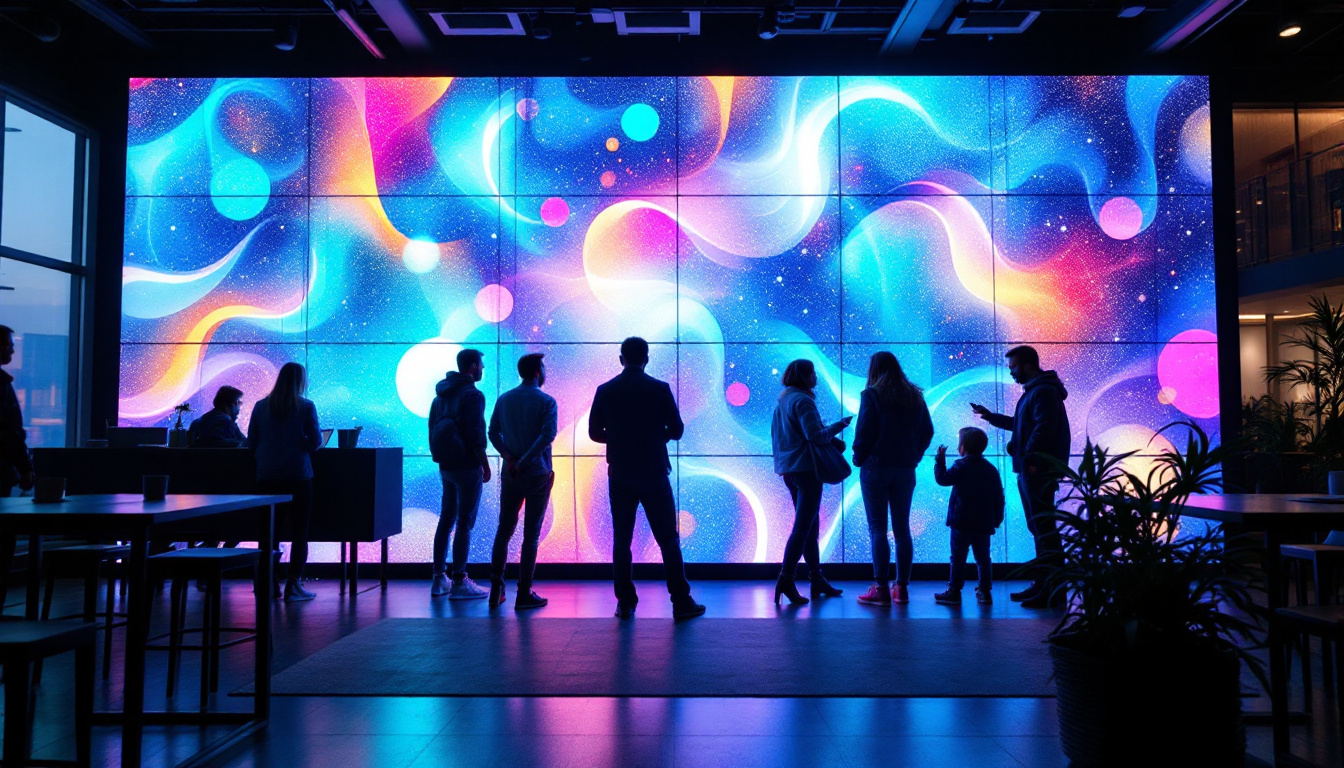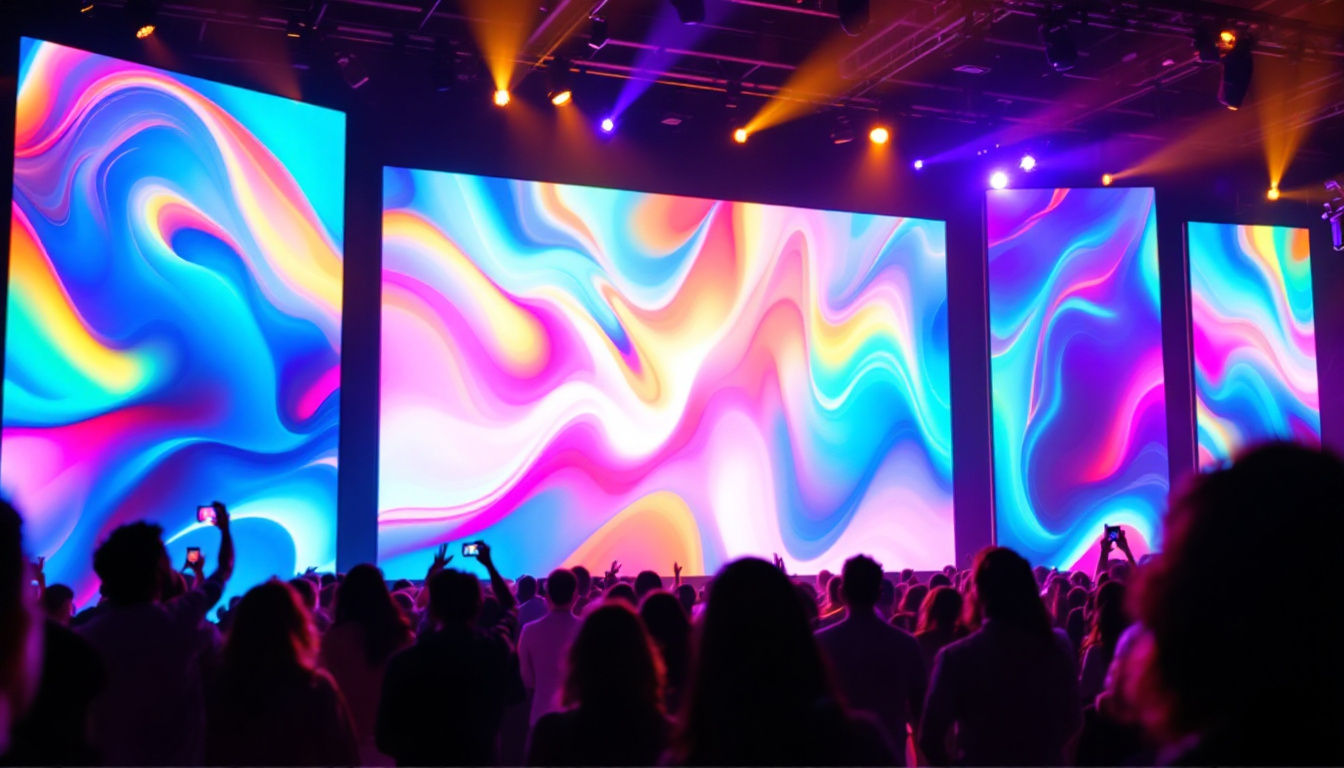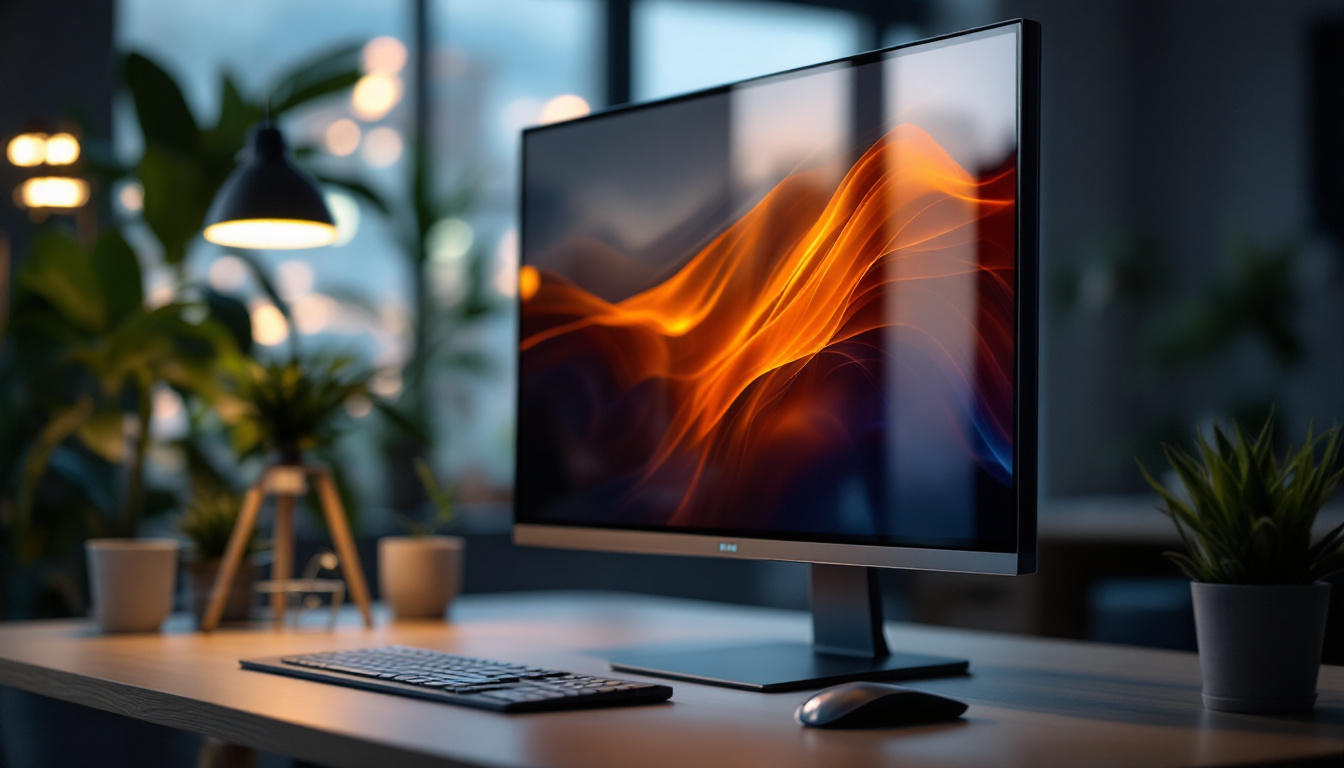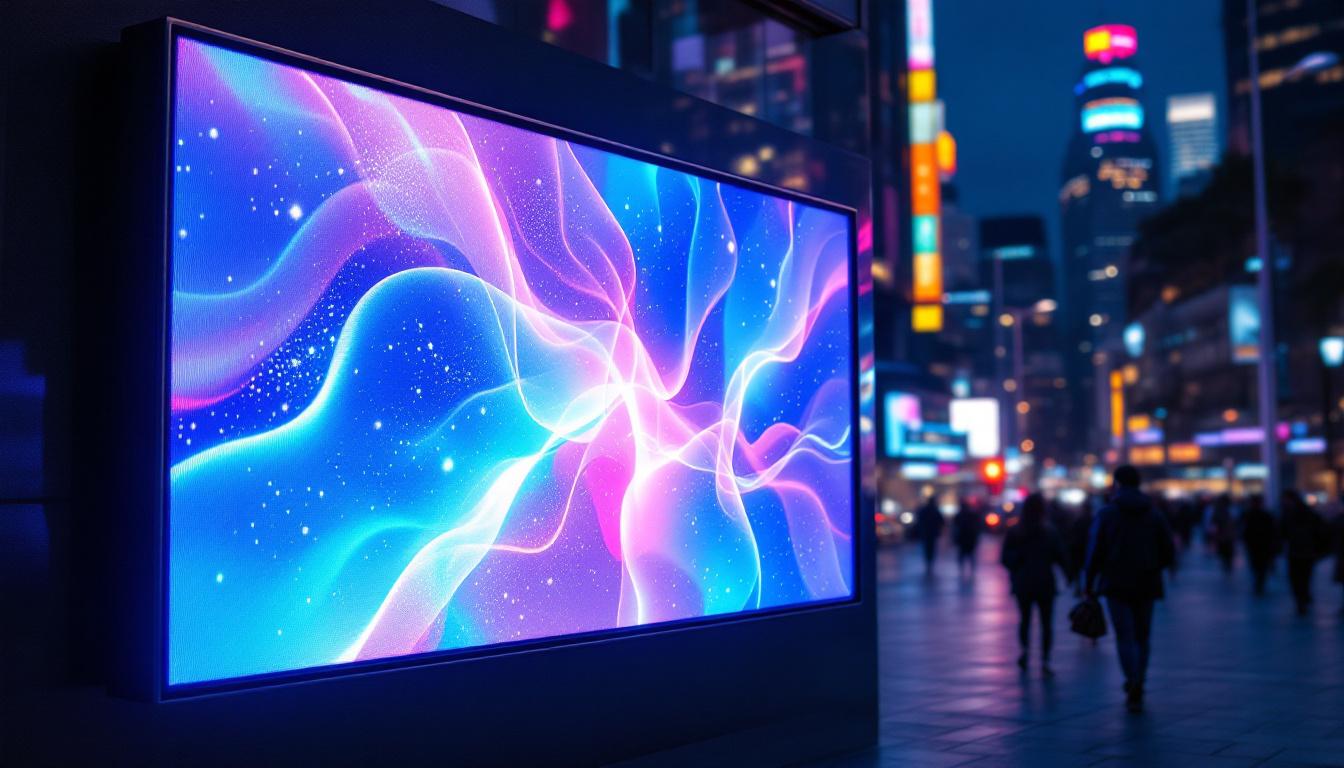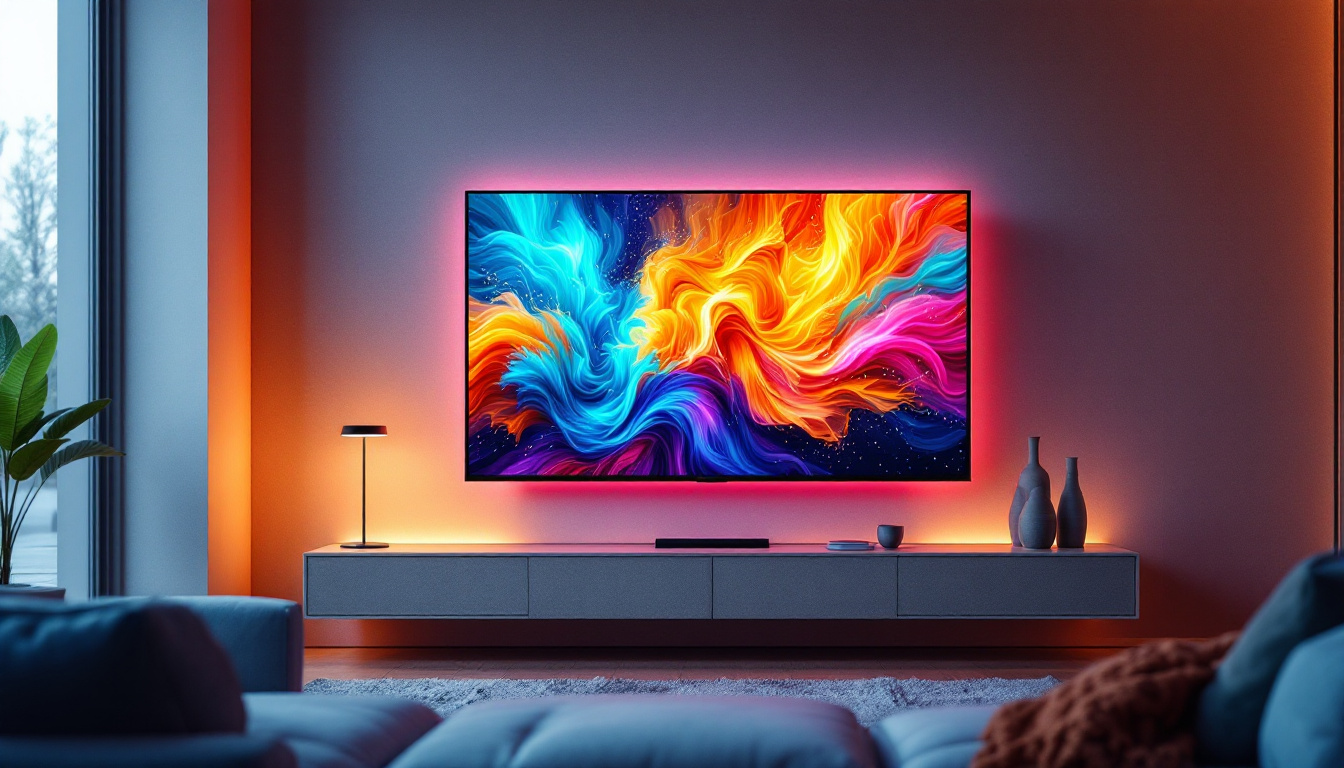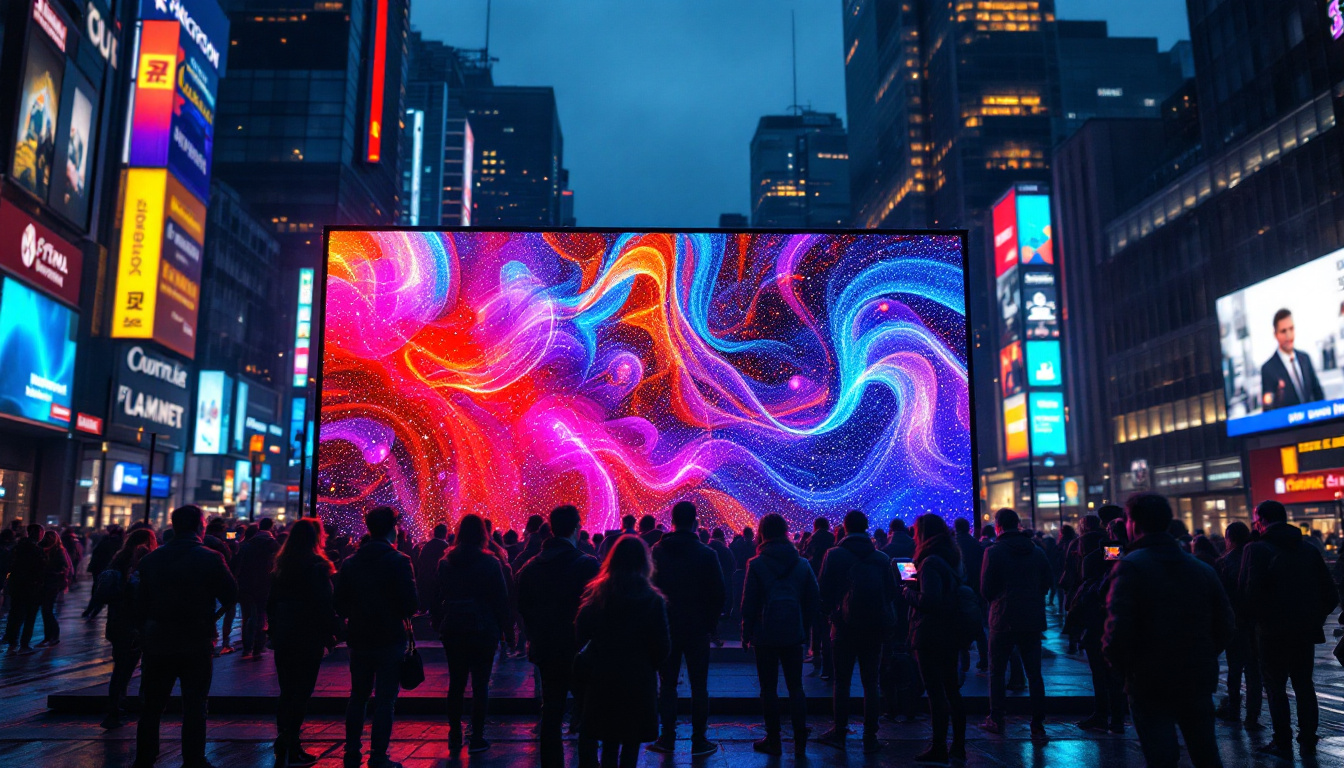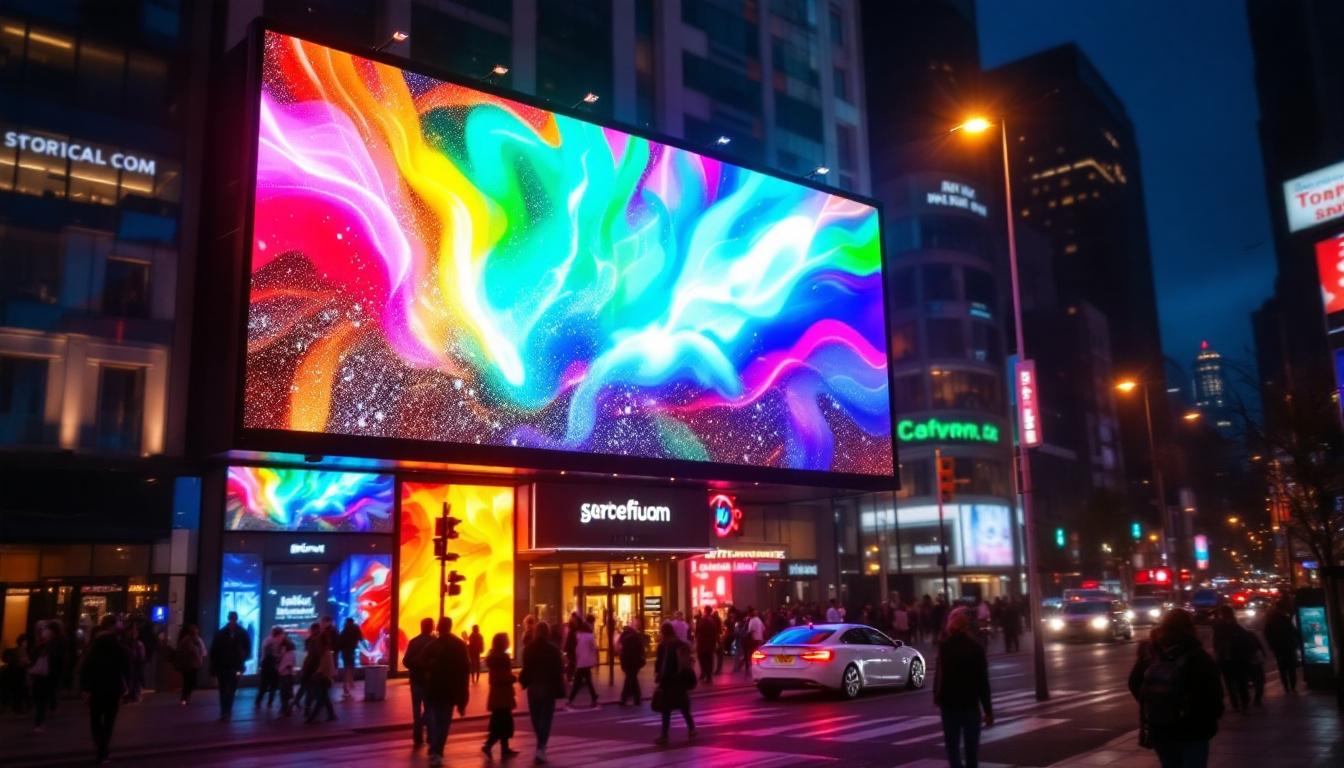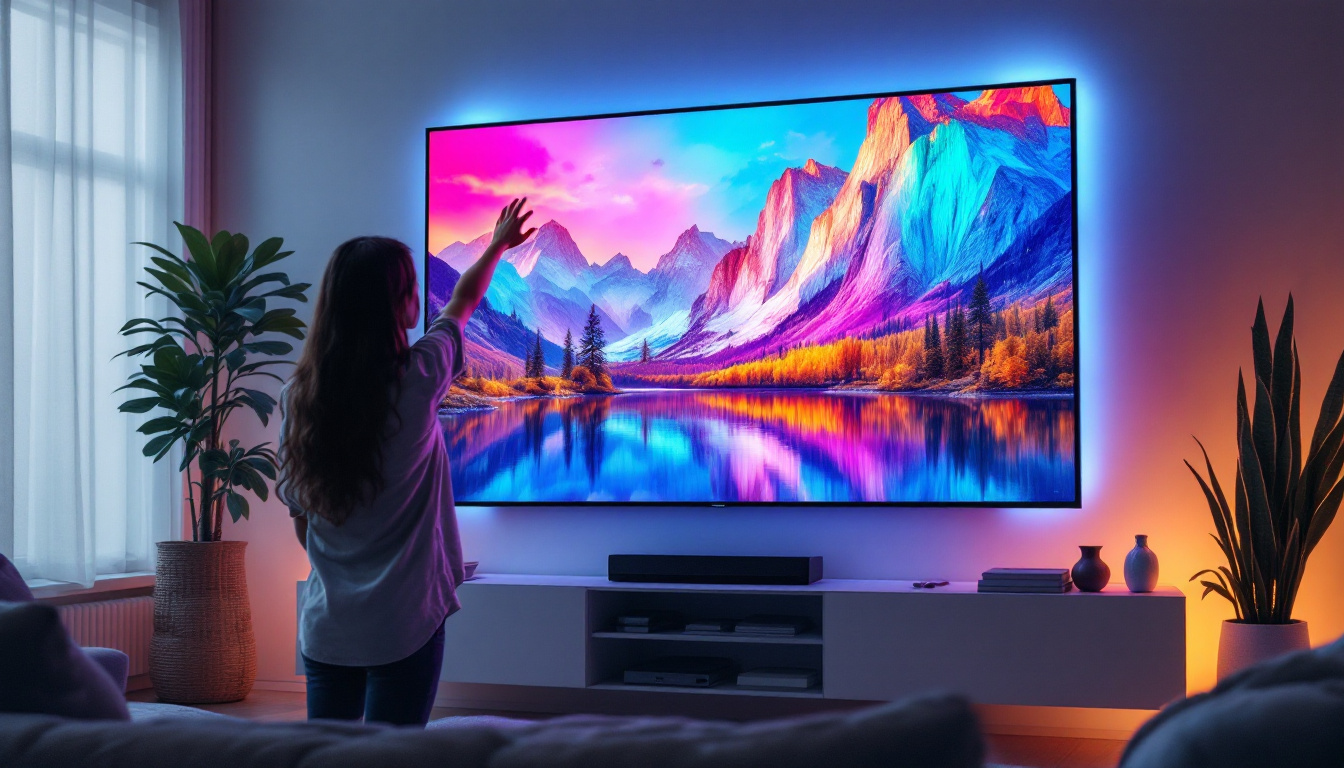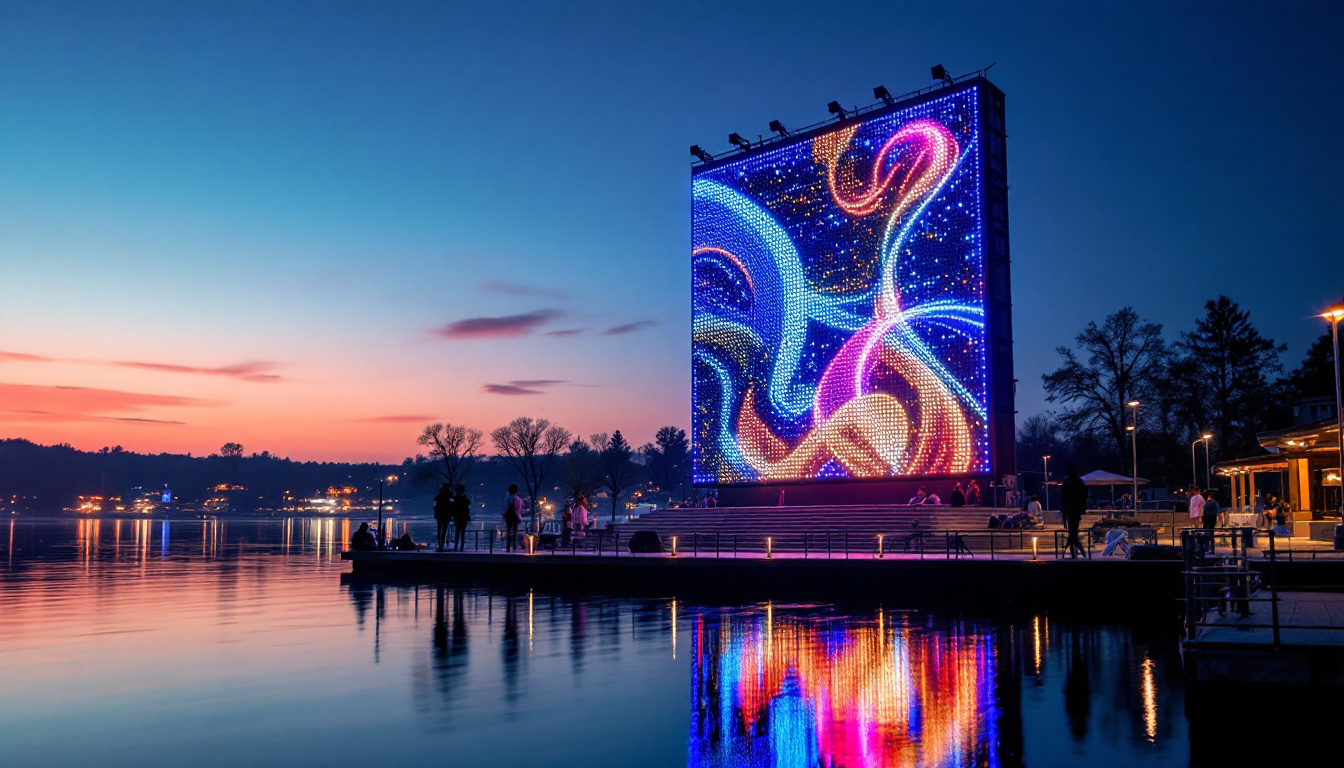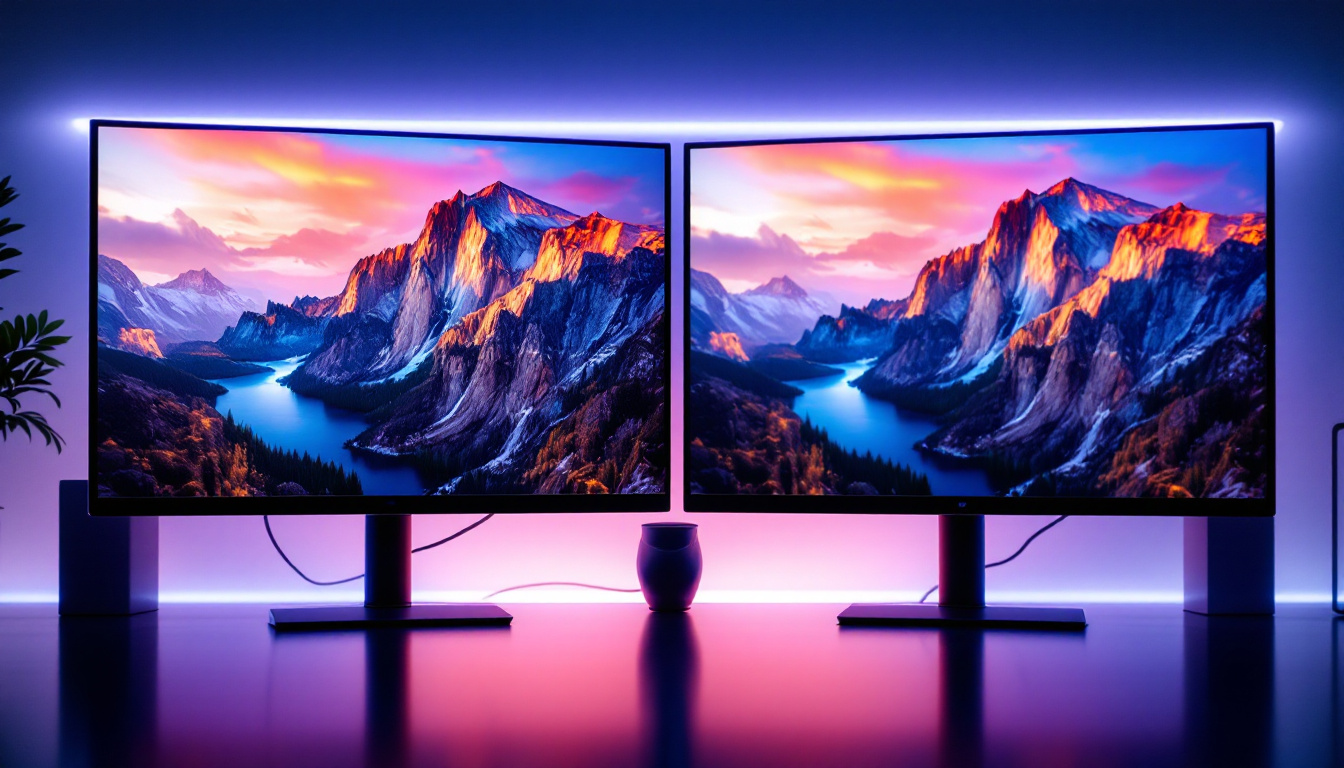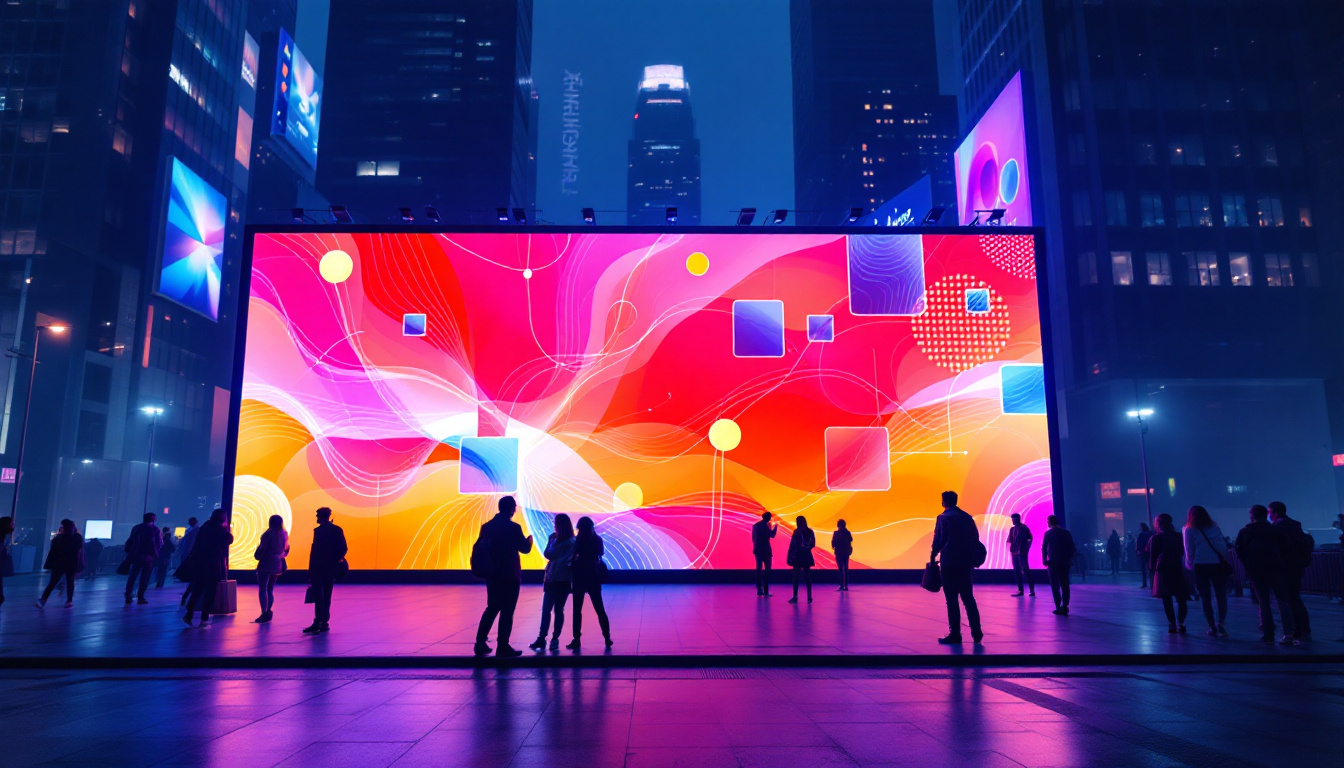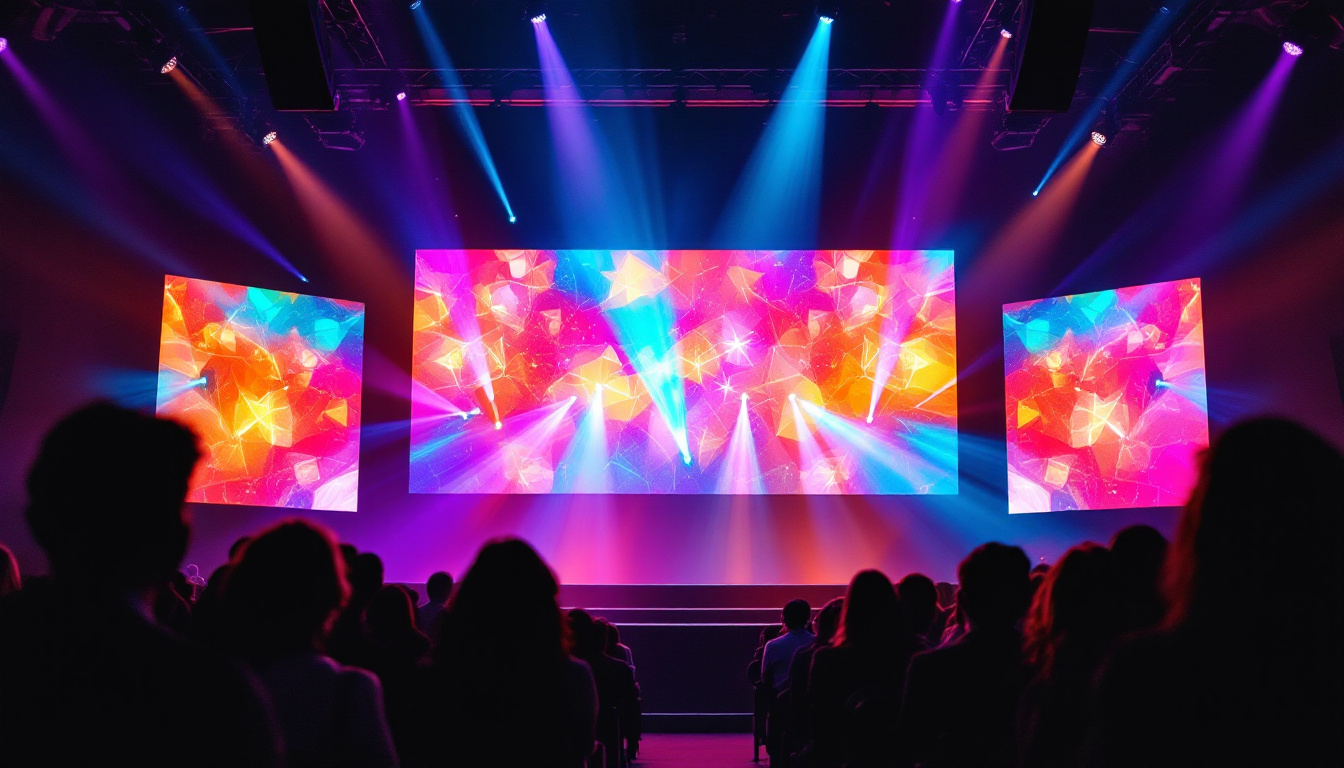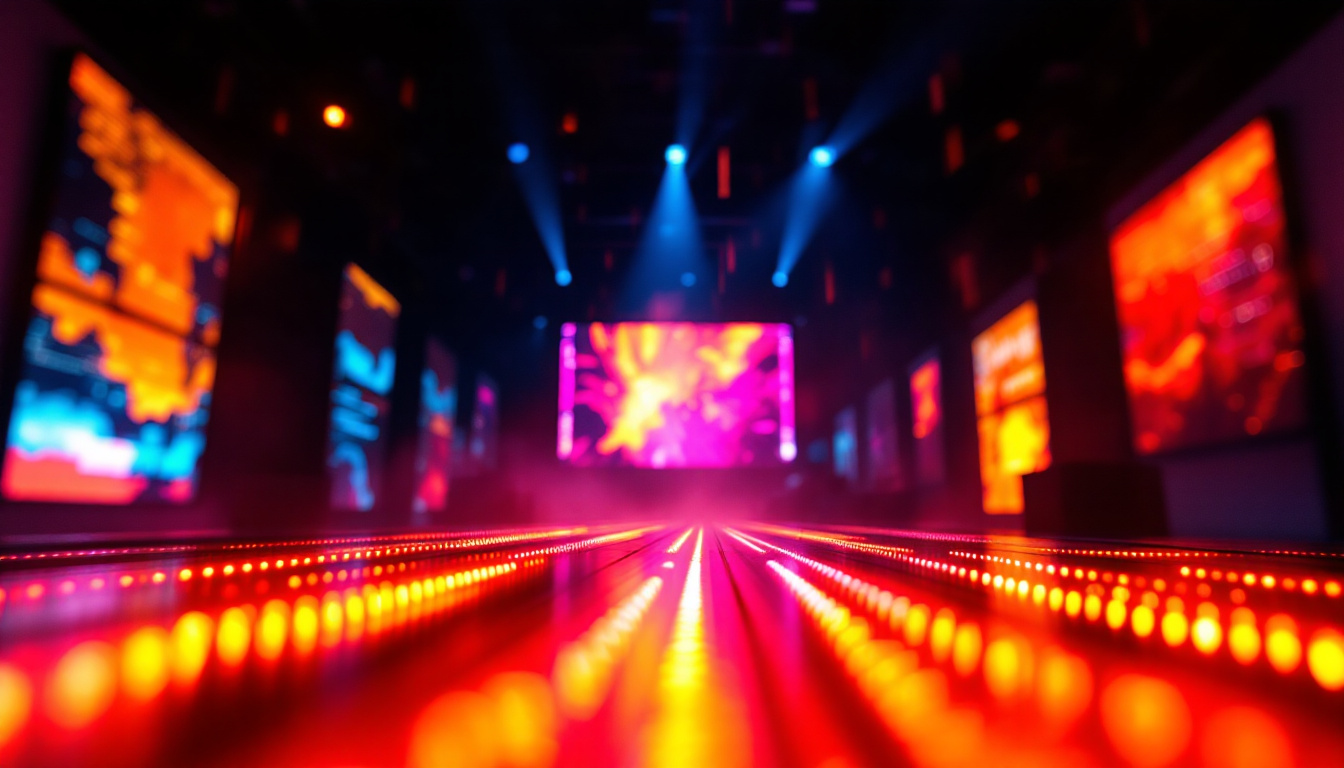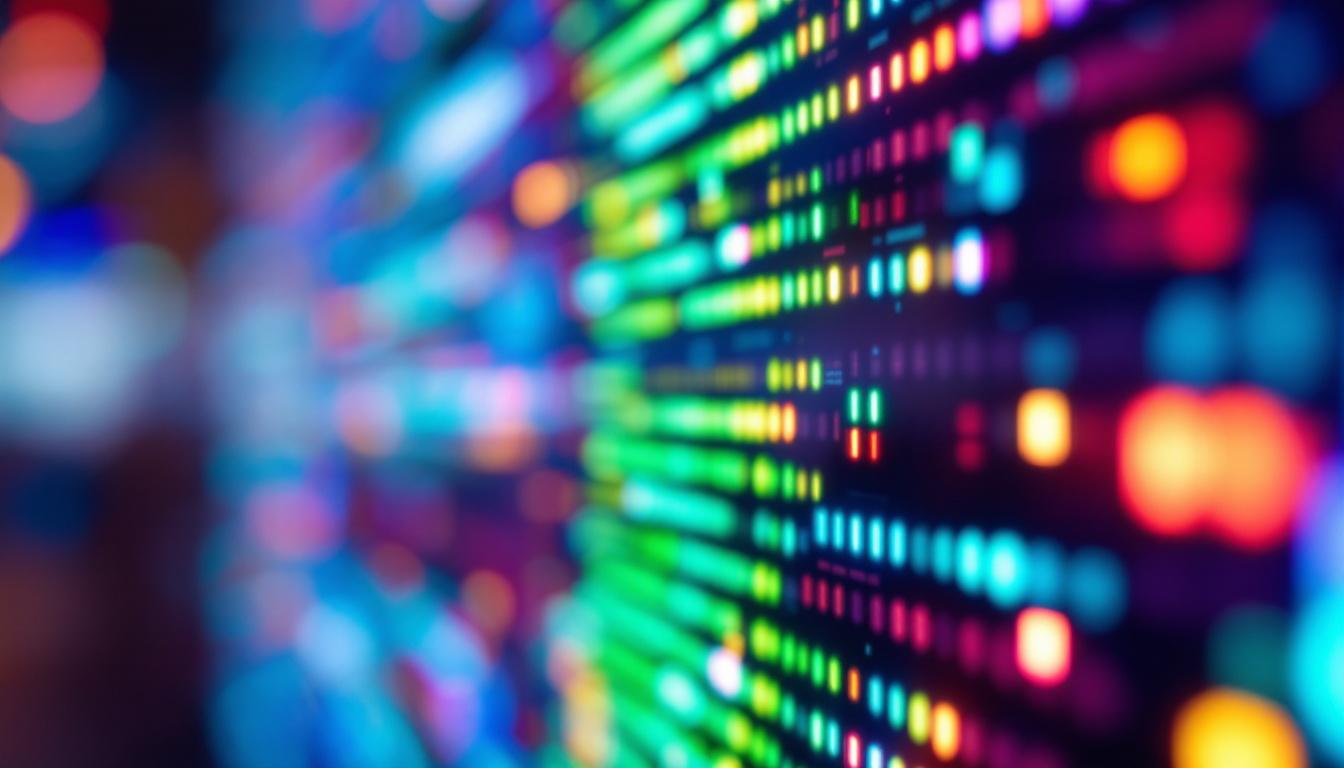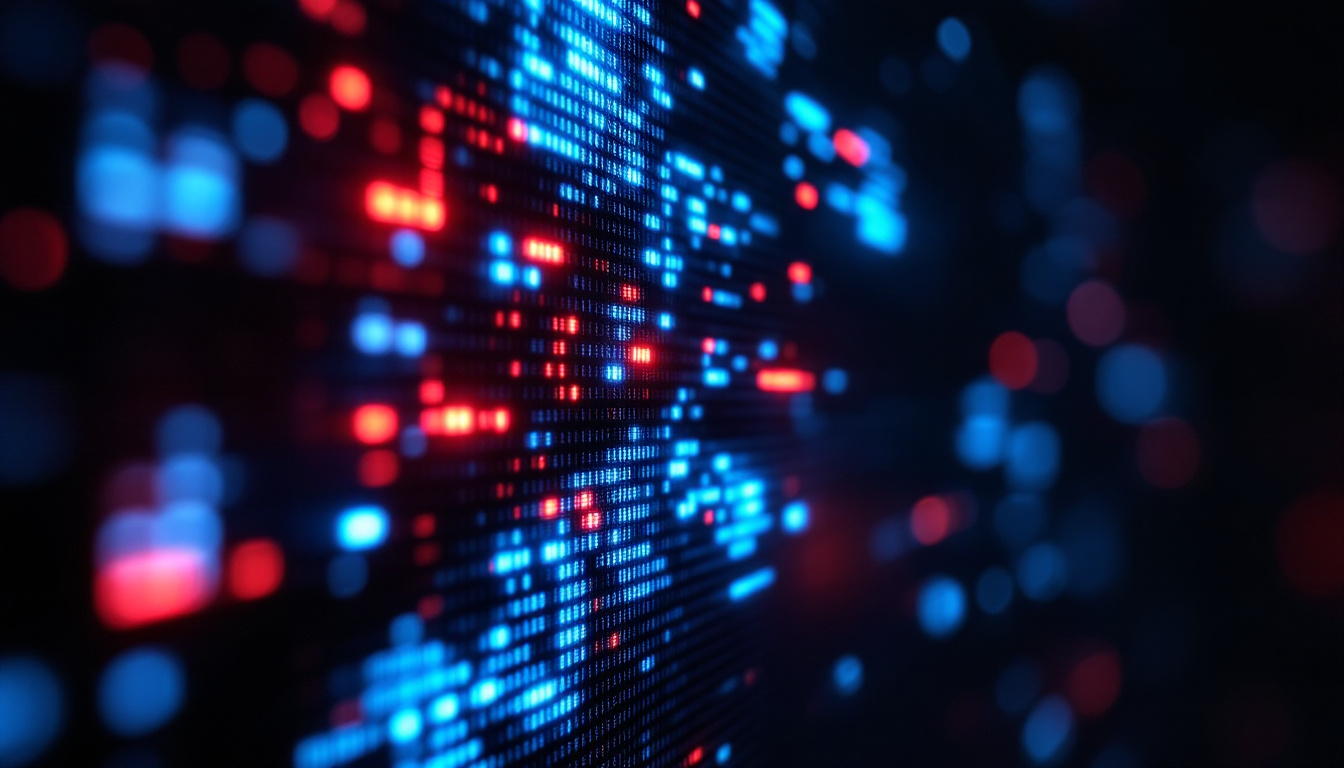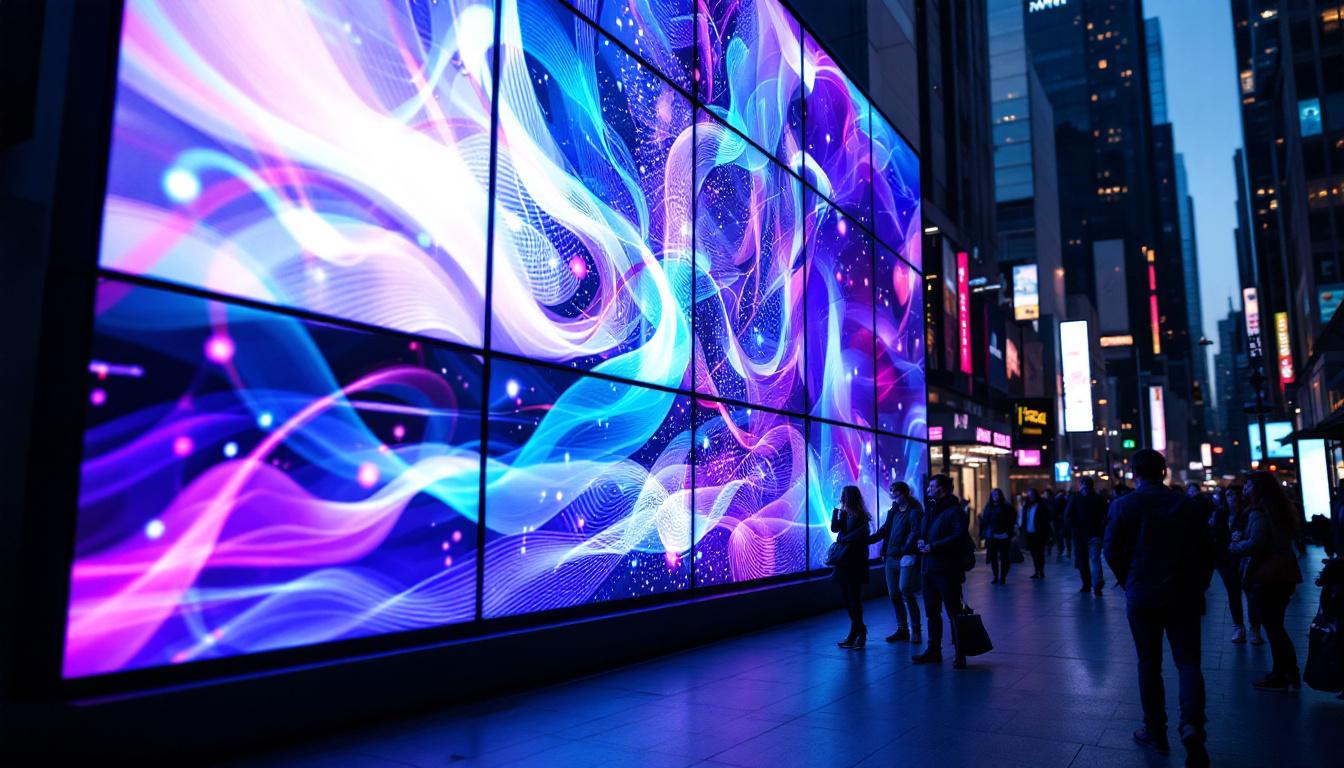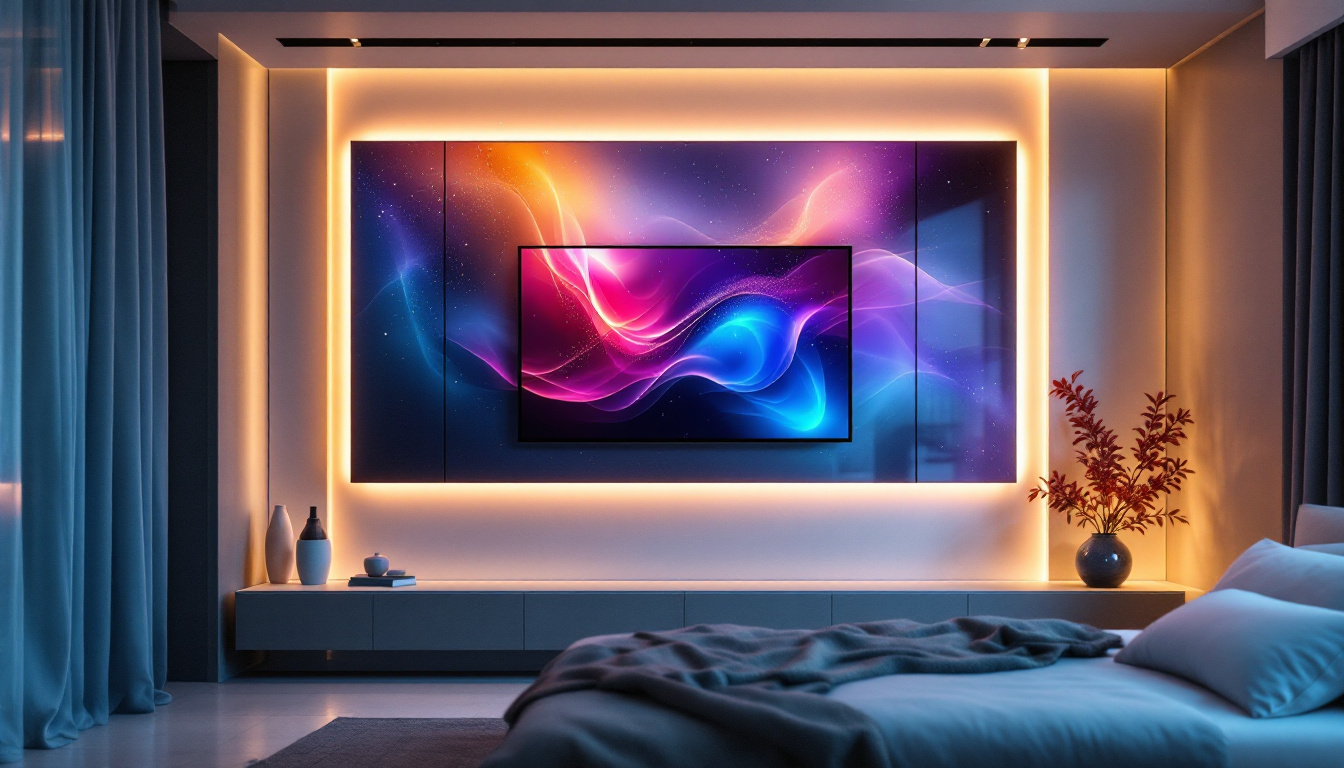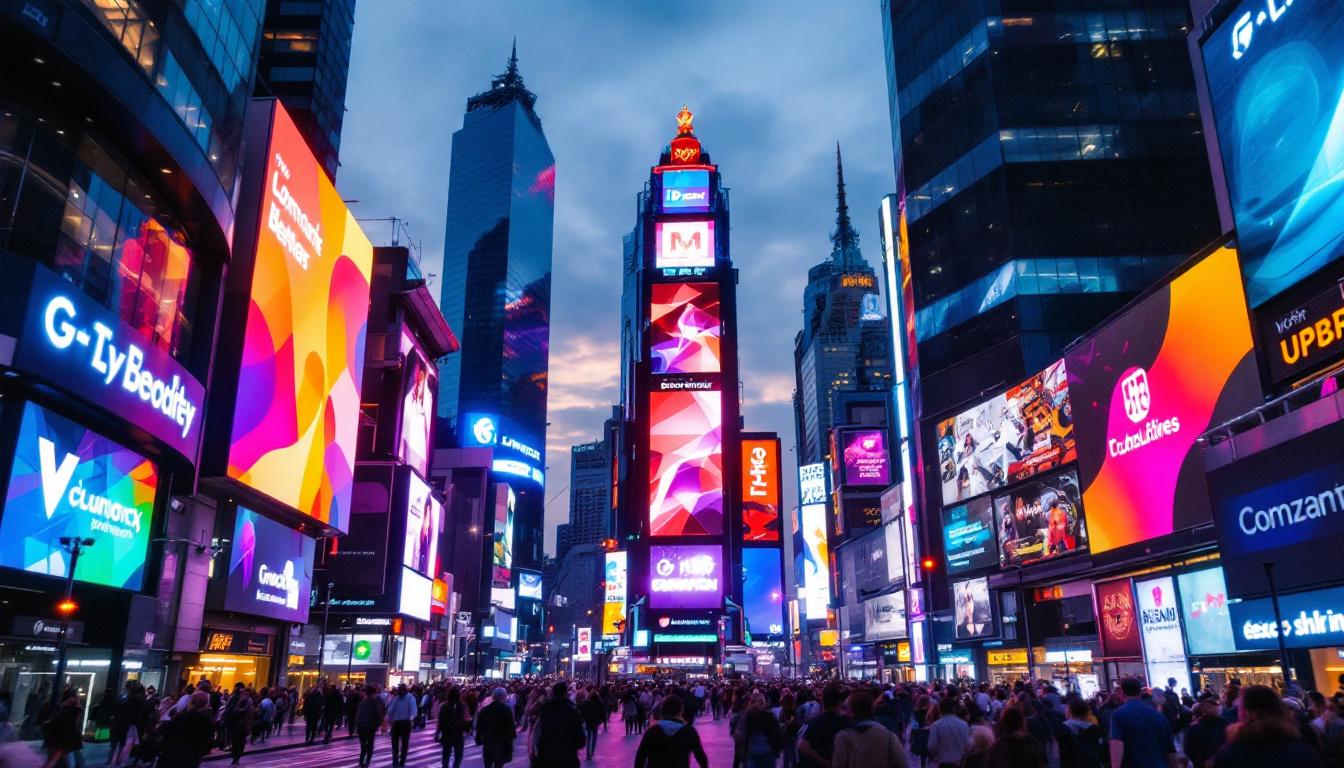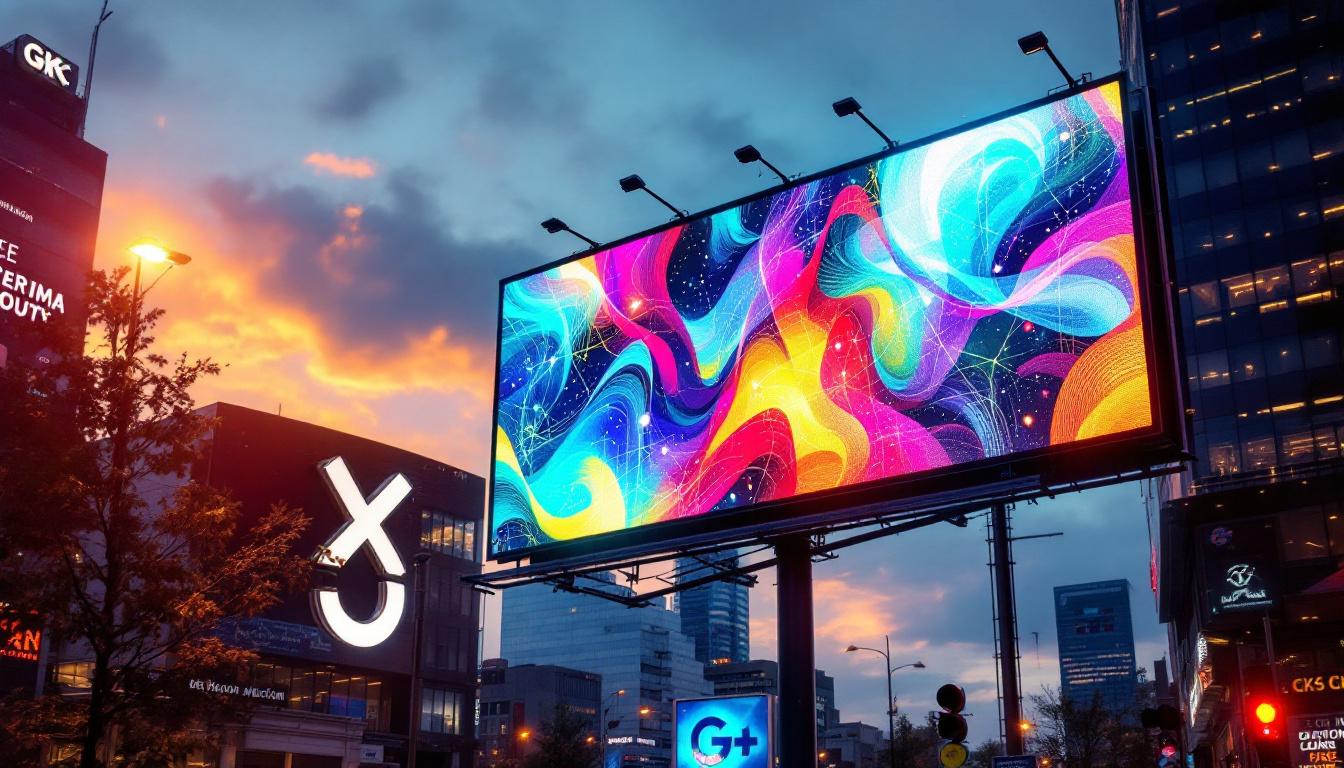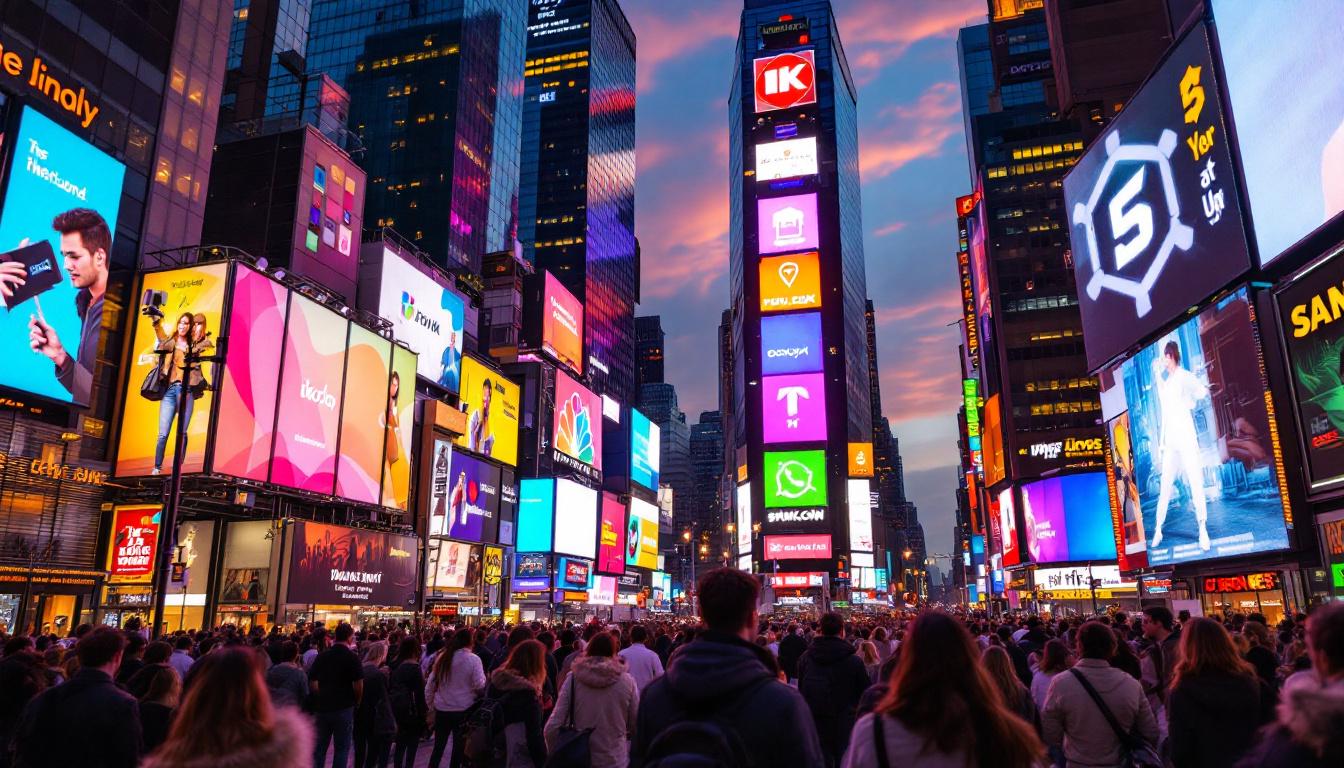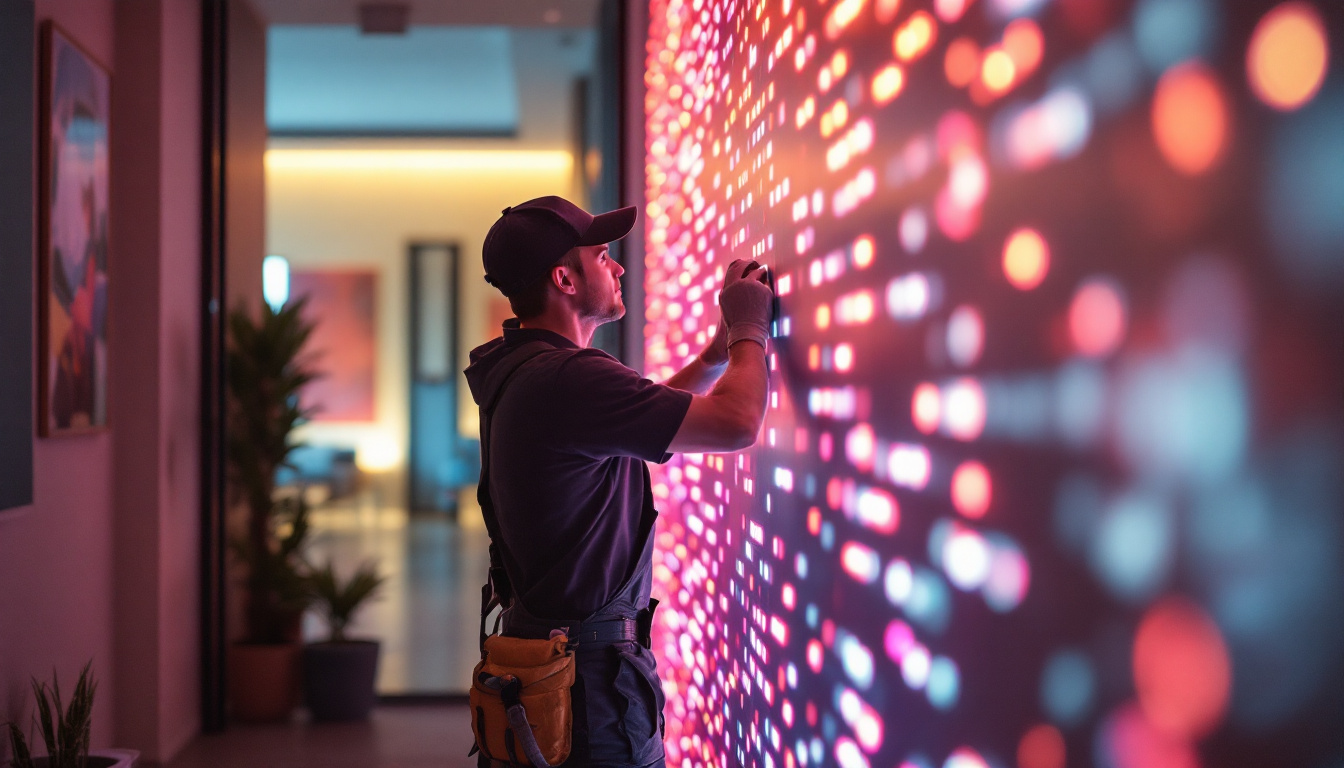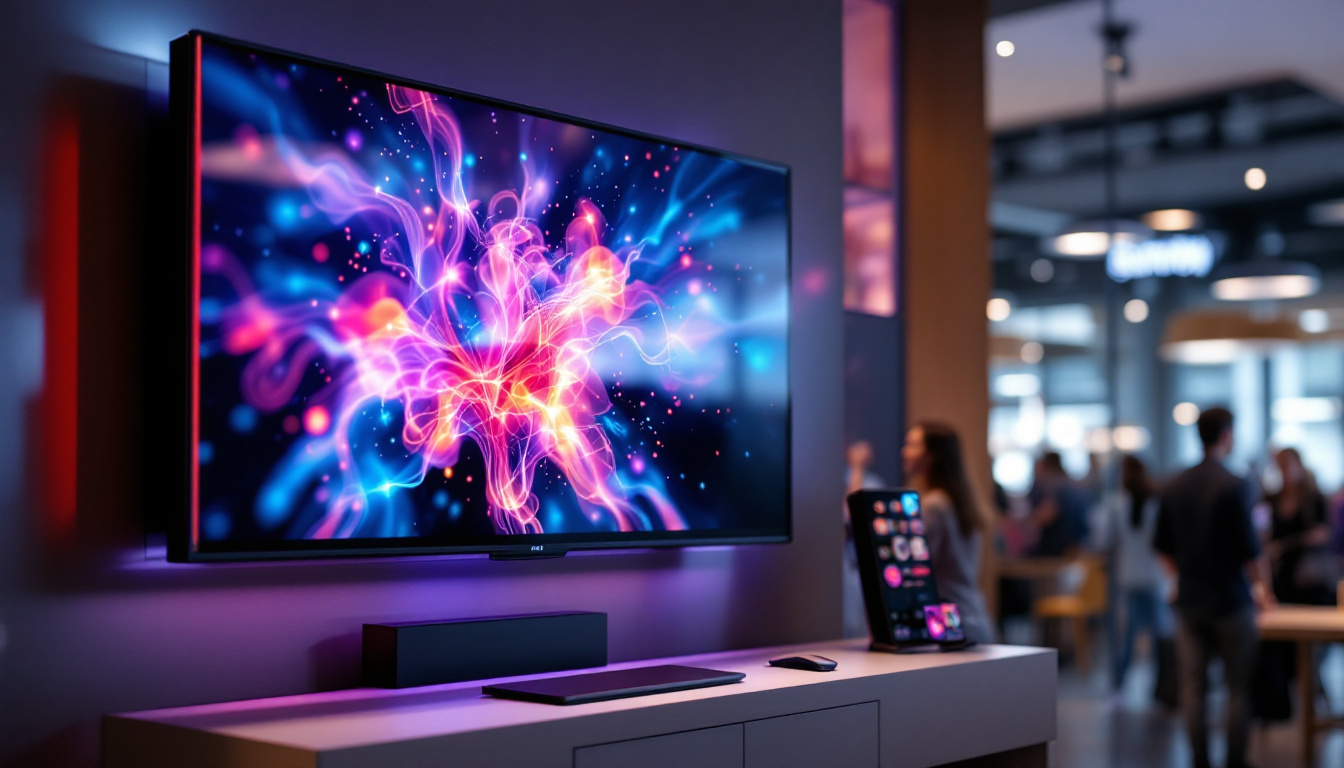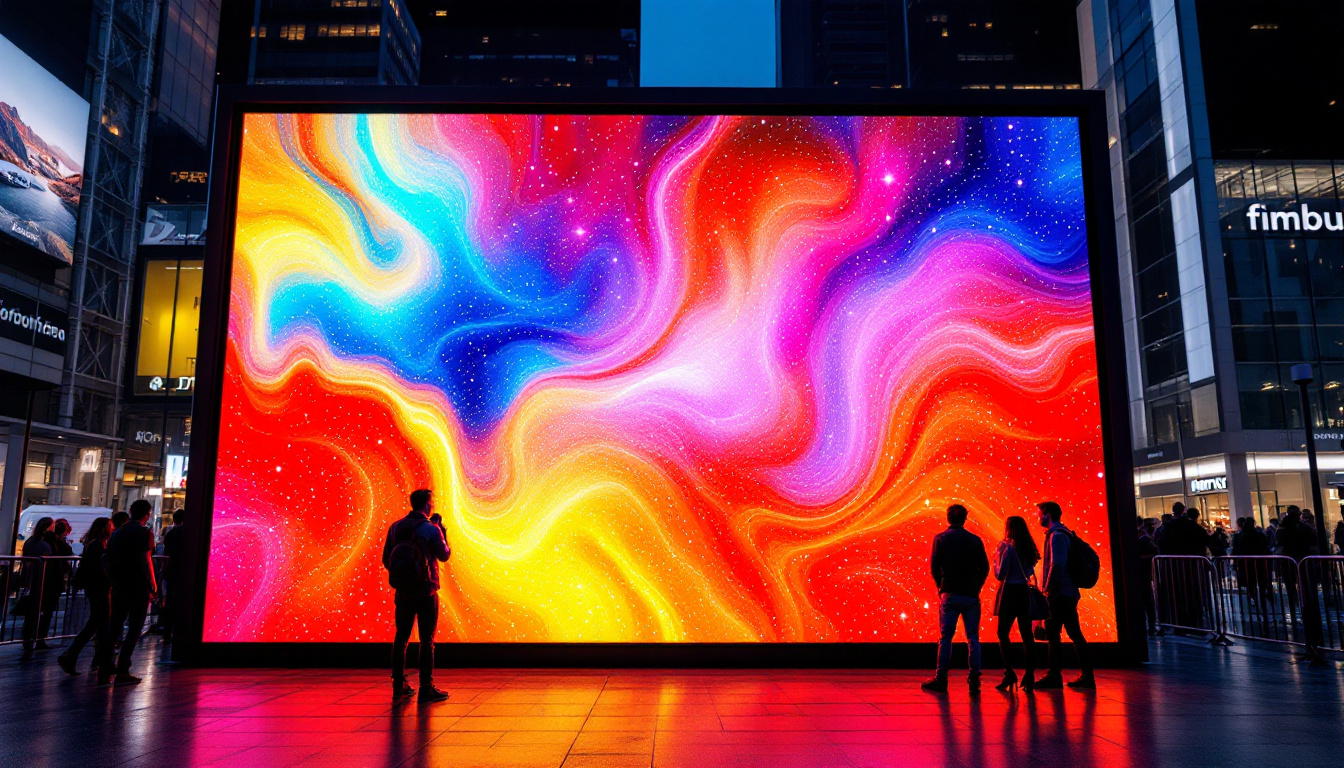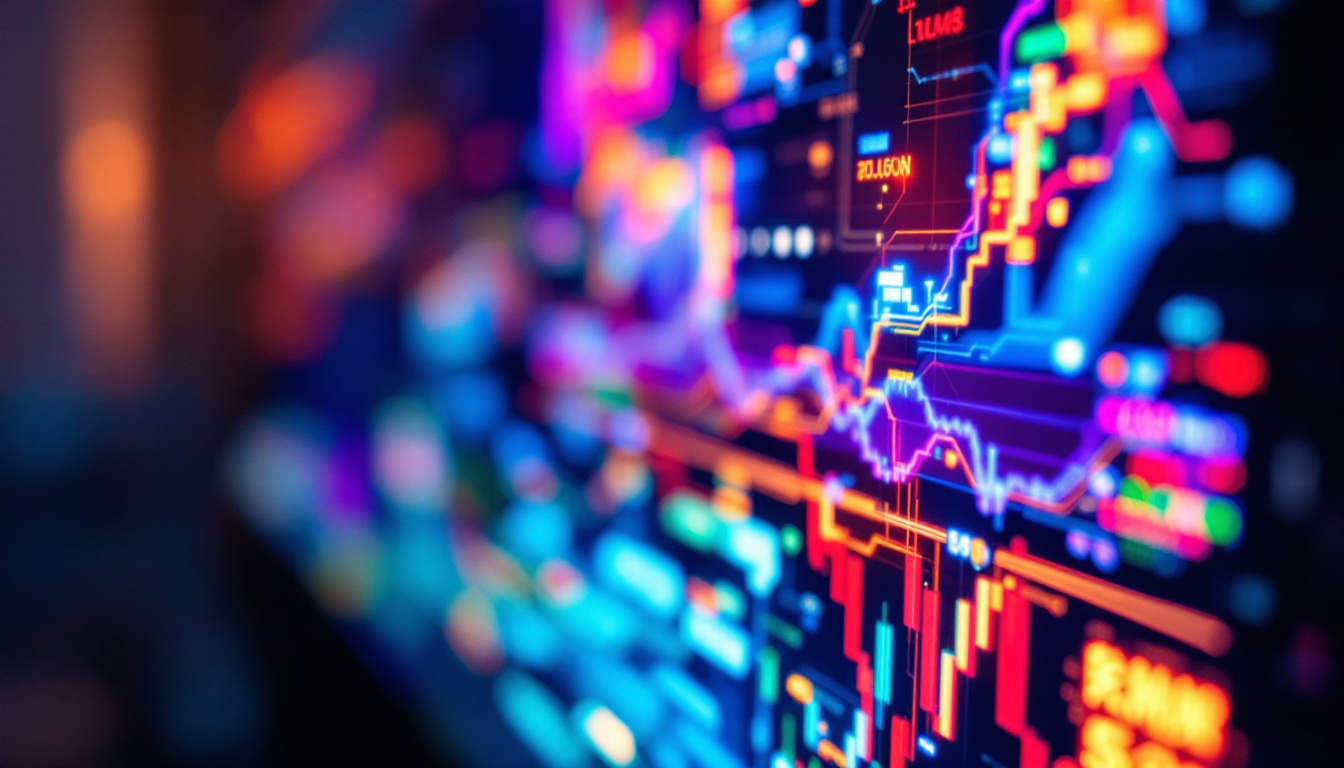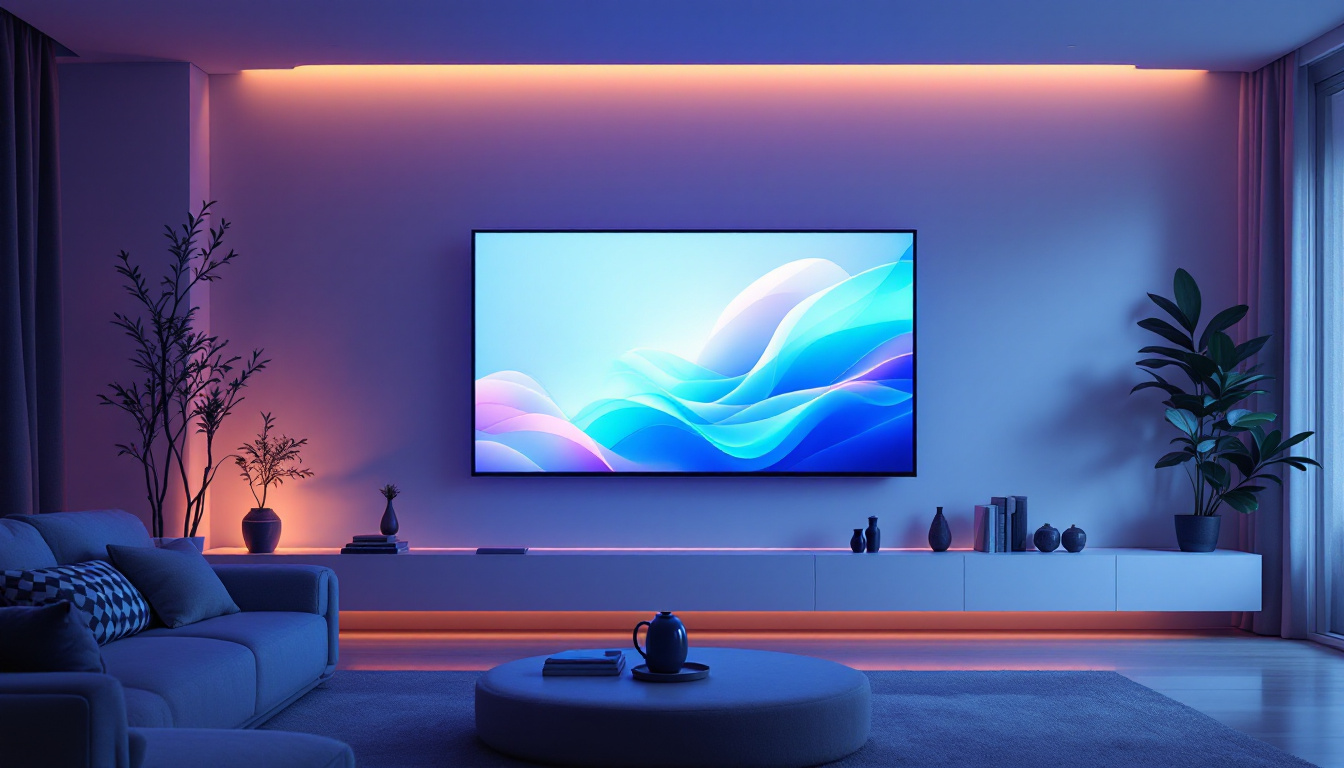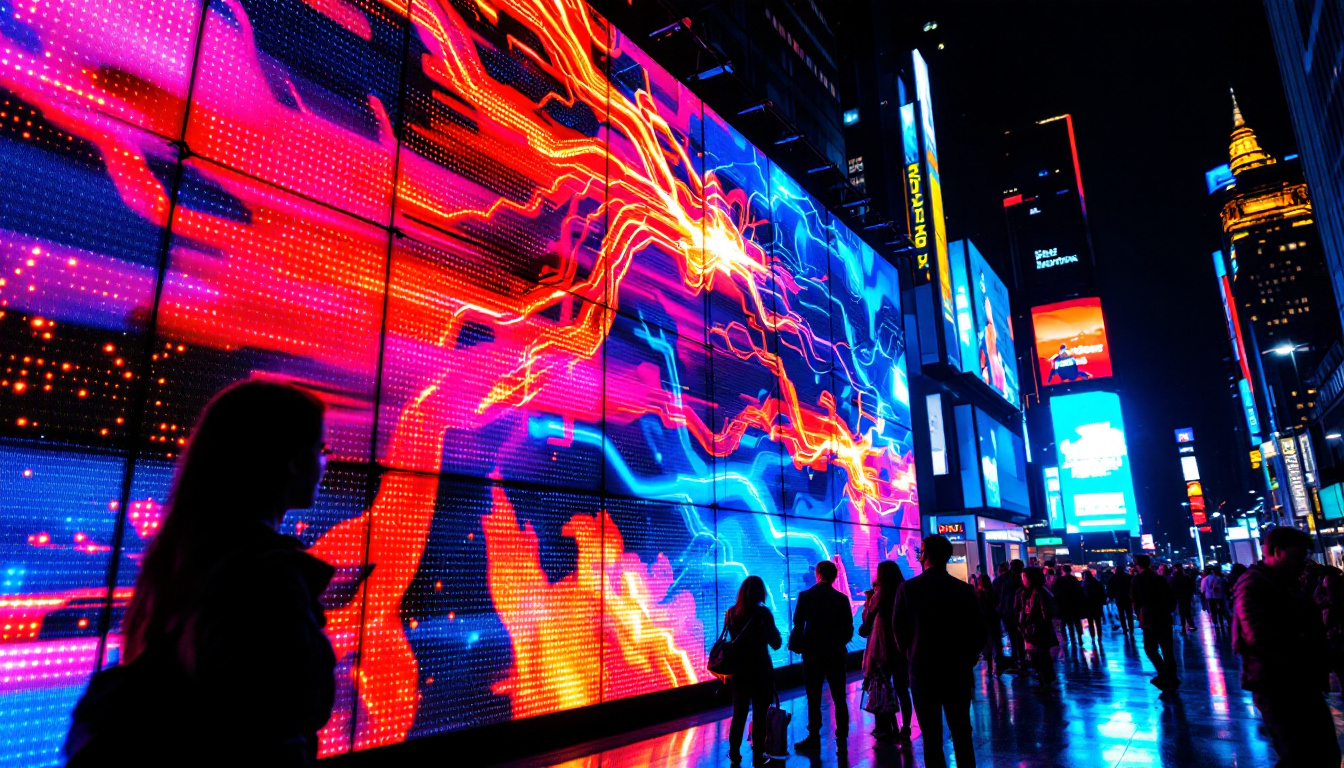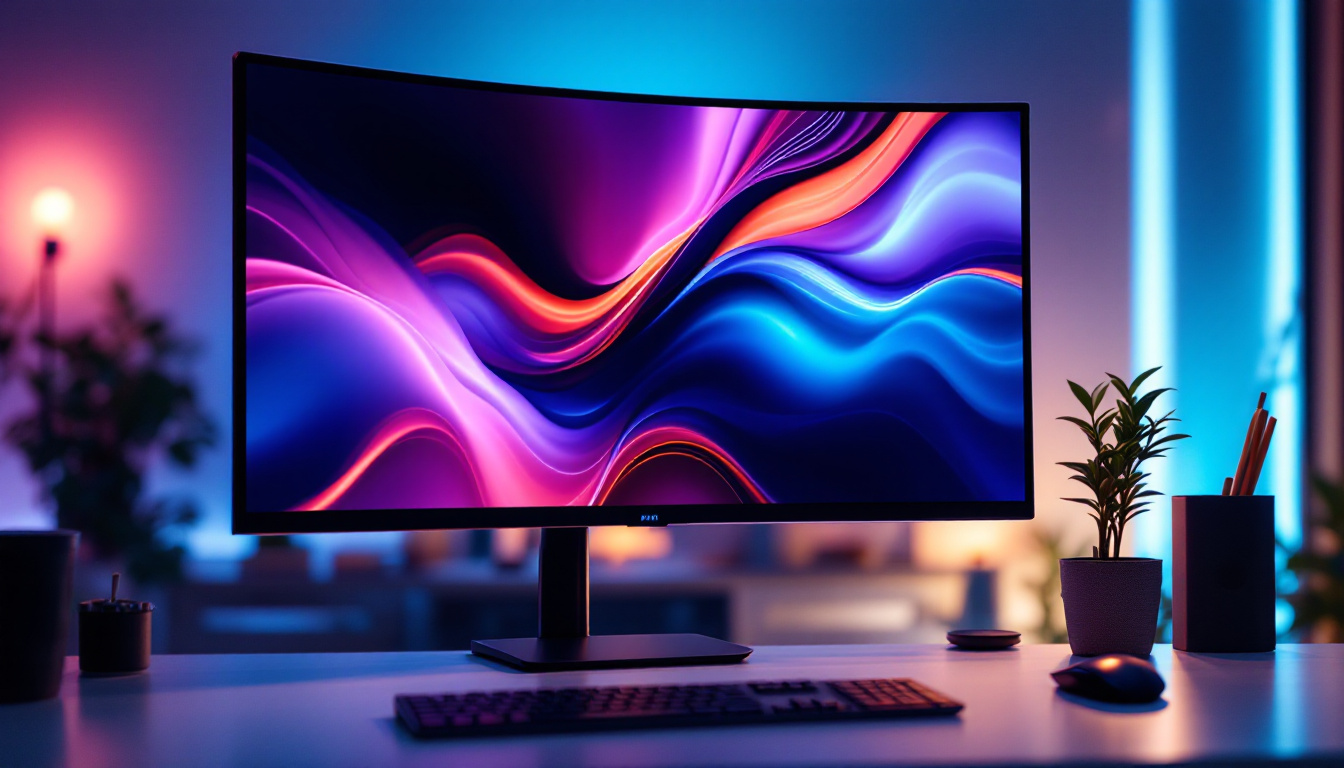The modern world is increasingly visual, with vibrant displays captivating audiences in various settings. Among the most prominent technologies used for this purpose is the LED display. This article delves into the intricacies of LED displays, exploring their functionality, benefits, and applications. Understanding these displays can help businesses and individuals make informed decisions about their visual communication needs.
What is an LED Display?
LED stands for Light Emitting Diode, a semiconductor device that emits light when an electric current passes through it. LED displays utilize these diodes to create images and videos, offering a dynamic way to convey information. Unlike traditional displays that rely on backlighting, LED displays generate light directly from the diodes, resulting in brighter images and lower power consumption. This technology has revolutionized the way we interact with visual content, making it a staple in various industries, from advertising to entertainment.
Moreover, the longevity of LED displays is another significant advantage. With a lifespan that can exceed 50,000 hours, they require less frequent replacements compared to traditional lighting solutions. This durability not only reduces maintenance costs but also minimizes waste, contributing to a more sustainable approach to display technology. As LED technology continues to evolve, we can expect even more innovative applications that leverage its unique properties.
Types of LED Displays
LED displays come in various types, each designed for specific applications. The main categories include:
- Direct View LED: These displays consist of individual LED modules that create a large screen. They are often used for outdoor advertising and large venues due to their high brightness and visibility. The ability to withstand harsh weather conditions makes them particularly suitable for billboards and sports arenas.
- LED Video Walls: Composed of multiple smaller LED panels, video walls can display high-resolution images and videos. They are commonly found in control rooms, event spaces, and retail environments. The modular nature of video walls allows for flexible configurations, enabling businesses to customize their displays according to their specific needs.
- OLED Displays: While technically a different technology, OLED (Organic Light Emitting Diode) displays share similarities with LED displays. They offer superior color accuracy and contrast, making them ideal for high-end applications. OLED technology also allows for thinner and more flexible screens, paving the way for innovative designs in consumer electronics.
How LED Displays Work
At the core of an LED display is a matrix of tiny LEDs arranged in a grid. Each LED represents a pixel, and the combination of these pixels forms the images seen on the screen. The brightness and color of each pixel can be adjusted independently, allowing for dynamic visuals. This pixel-level control enables the display to produce vibrant colors and sharp images, making it suitable for a wide range of applications, from digital signage to home entertainment.
The display operates through a process known as pulse-width modulation (PWM). By rapidly turning the LEDs on and off, the display can create the illusion of varying brightness levels. This technique not only enhances the visual experience but also contributes to energy efficiency. In addition, advancements in LED technology have led to improvements in color rendering and refresh rates, ensuring that fast-moving images are displayed smoothly without blurring or ghosting effects. As a result, LED displays are becoming increasingly popular in environments where high-quality visuals are paramount, such as in broadcasting and live events.
Benefits of LED Displays
LED displays offer numerous advantages over traditional display technologies, making them a popular choice for various applications. Here are some key benefits:
Energy Efficiency
One of the most significant advantages of LED displays is their energy efficiency. They consume less power compared to older technologies, such as LCD or CRT displays. This efficiency not only reduces operational costs but also minimizes the environmental impact. The lower energy consumption translates into reduced carbon footprints, making LED displays a more sustainable choice for businesses and organizations aiming to adopt greener practices.
Brightness and Visibility
LED displays are known for their exceptional brightness, making them suitable for both indoor and outdoor environments. The high luminance ensures that content remains visible even in direct sunlight, which is crucial for outdoor advertising and events. Furthermore, the ability to adjust brightness levels dynamically allows for optimal viewing experiences in varying lighting conditions, ensuring that messages are delivered effectively regardless of the time of day.
Durability and Longevity
LED displays are built to withstand harsh conditions. They are resistant to shock, vibration, and temperature fluctuations, making them ideal for outdoor use. Additionally, LED technology has a longer lifespan compared to traditional displays, often lasting up to 100,000 hours or more. This longevity not only reduces the need for frequent replacements but also contributes to lower maintenance costs over time, allowing businesses to allocate resources more efficiently.
Versatility in Applications
Another notable benefit of LED displays is their versatility across various applications. From large-scale billboards and stadium screens to smaller digital signage in retail environments, LED technology can be adapted to meet diverse needs. They can display a wide range of content, including videos, animations, and static images, making them an effective medium for engaging audiences. This adaptability allows businesses to create dynamic marketing campaigns that can be easily updated and tailored to specific events or promotions.
Enhanced Color Accuracy
LED displays also excel in color accuracy, providing vibrant and rich colors that can enhance the viewing experience. This feature is particularly important in industries such as fashion, art, and advertising, where precise color representation is crucial. The ability to produce a broader color spectrum means that LED displays can showcase images and videos with stunning clarity and detail, capturing the attention of viewers and leaving a lasting impression. This high color fidelity is essential for brands looking to convey their message effectively and attractively.
Applications of LED Displays
The versatility of LED displays allows them to be used in a wide range of applications. From advertising to entertainment, their impact is felt across various industries.
Advertising and Marketing
One of the most common uses of LED displays is in advertising. Billboards and digital signage in retail environments utilize LED technology to capture the attention of potential customers. The ability to change content quickly allows businesses to promote special offers and events in real-time.
Events and Entertainment
In the entertainment industry, LED displays have revolutionized the way events are experienced. Concerts, festivals, and sporting events often feature large LED screens that enhance the audience’s experience. These displays can showcase live feeds, graphics, and animations, creating an immersive atmosphere.
Corporate and Educational Settings
LED displays are increasingly being adopted in corporate and educational environments. They are used for presentations, training sessions, and informational displays. The clarity and vibrancy of LED technology enhance communication, making it easier to convey complex information effectively.
Choosing the Right LED Display
When selecting an LED display, several factors should be considered to ensure it meets specific needs. Understanding these factors can help in making an informed decision.
Resolution
Resolution is a critical aspect of any display. It determines the clarity and detail of the images shown. Higher resolution displays are ideal for applications where fine detail is essential, such as in control rooms or high-end advertising. Conversely, lower resolution displays may suffice for larger viewing distances.
Size and Configuration
The size of the LED display should be determined by the intended use and viewing distance. Larger displays are suitable for outdoor advertising, while smaller configurations may be more appropriate for indoor settings. Additionally, modular designs allow for customization, enabling businesses to create unique display shapes and sizes.
Brightness Levels
Brightness is another crucial factor, especially for outdoor displays. The brightness level is measured in nits, and higher values are necessary for environments with significant ambient light. Understanding the location and lighting conditions will help in selecting the appropriate brightness level.
Maintenance and Care for LED Displays
While LED displays are known for their durability, regular maintenance is essential to ensure optimal performance and longevity. Proper care can prevent issues and enhance the display’s lifespan.
Cleaning and Upkeep
Cleaning LED displays should be done with care to avoid damaging the screen. Using a soft cloth and mild cleaning solution is recommended. Regular cleaning helps maintain image quality and prevents dust buildup that can affect brightness and clarity.
Software Updates
Many LED displays come with software that requires regular updates to function correctly. Keeping the software up to date ensures compatibility with new features and enhances performance. It is advisable to consult with the manufacturer for specific guidelines on software management.
Professional Servicing
For larger installations, professional servicing may be necessary. Technicians can perform routine checks, calibrate the display, and address any technical issues that may arise. Regular professional maintenance can prevent significant problems and extend the display’s lifespan.
Future Trends in LED Display Technology
The LED display industry is continually evolving, with advancements in technology paving the way for new possibilities. Staying informed about these trends can help businesses and individuals leverage the latest innovations.
MicroLED Technology
MicroLED is an emerging technology that promises to revolutionize the display industry. It utilizes microscopic LEDs to create individual pixels, resulting in superior image quality, greater energy efficiency, and thinner displays. This technology is expected to play a significant role in the future of both consumer and commercial displays.
Flexible and Transparent Displays
Flexibility in design is becoming increasingly important, and manufacturers are developing flexible LED displays that can be curved or shaped to fit various environments. Additionally, transparent LED displays are gaining popularity, allowing for innovative applications in retail and architecture.
Integration with Smart Technology
The integration of LED displays with smart technology is another trend to watch. Displays that can connect to the Internet of Things (IoT) will enable real-time data sharing and interactive experiences. This capability will enhance the effectiveness of advertising and communication strategies.
Conclusion
LED displays have transformed the way information is presented and consumed. With their energy efficiency, brightness, and versatility, they have become a staple in various industries. Understanding the technology behind LED displays, their benefits, and applications can empower businesses and individuals to make informed decisions about their visual communication needs.
As technology continues to evolve, staying abreast of trends and advancements will be crucial for maximizing the potential of LED displays. Whether for advertising, entertainment, or corporate use, investing in LED technology can yield significant returns and enhance engagement with audiences.
Discover LumenMatrix LED Display Solutions
Ready to elevate your visual communication with the latest in LED display technology? LumenMatrix offers a comprehensive range of innovative LED display solutions tailored to your unique needs. From Indoor and Outdoor LED Wall Displays to specialized options like Vehicle, Sports, and Floor LED Displays, our products are designed to captivate your audience and amplify your message. Embrace the future of digital signage with our Custom, All-in-One, and Transparent LED Displays. Check out LumenMatrix LED Display Solutions today and transform your visual experience.

